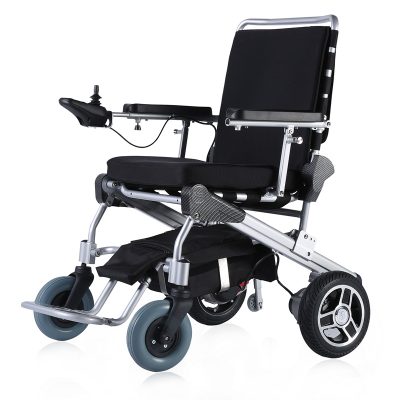Electric wheelchairs have undergone significant technological advancements in recent years, revolutionizing mobility and independence for individuals with mobility challenges. Here’s a look at some of the cutting-edge features that define modern electric wheelchairs:
- Smart Navigation: Many electric wheelchairs now incorporate smart navigation systems that use sensors and algorithms to detect obstacles and plan optimal routes. This technology enhances safety and allows users to navigate complex environments with ease.
- Bluetooth Connectivity: Some electric wheelchairs offer Bluetooth connectivity, allowing users to control and customize their chairs through smartphone apps. This feature also enables remote diagnostics and updates.
- Customizable Seating: Advanced electric wheelchairs come with customizable seating options. Users can adjust seat height, angle, and even incorporate pressure-relief cushions for maximum comfort and support.
- Terrain Adaptability: Electric wheelchairs equipped with sophisticated suspension systems and large wheels are capable of traversing various terrains, including uneven surfaces, gravel paths, and even certain outdoor environments.
- Voice Control: Voice-controlled electric wheelchairs are on the rise. Users can operate the chair using voice commands, enabling hands-free control and enhancing accessibility for those with limited hand function.
- Obstacle Detection and Avoidance: State-of-the-art electric wheelchairs utilize sensors to detect obstacles in the user’s path and automatically adjust the wheelchair’s trajectory to avoid collisions.
- Foldable and Portable Designs: Innovations in design have led to foldable and portable electric wheelchairs that can be easily transported in cars or airplanes, providing users with greater flexibility in travel.
- Battery Longevity: Lithium-ion battery technology has significantly extended the range and longevity of electric wheelchairs. Some models can travel longer distances on a single charge, reducing the frequency of recharging.
- User-Friendly Controls: Intuitive control interfaces, such as joystick controllers and touchscreens, make operating electric wheelchairs more user-friendly, especially for those with limited dexterity.
- Integration with Smart Homes: Electric wheelchairs can be integrated with smart home systems, allowing users to control their environment, such as adjusting lighting or opening doors, directly from their chair.
These advancements in electric wheelchair technology are a testament to the ongoing commitment to enhancing the quality of life for individuals with mobility impairments. As technology continues to evolve, electric wheelchairs are becoming not only tools for mobility but also vehicles of empowerment.














